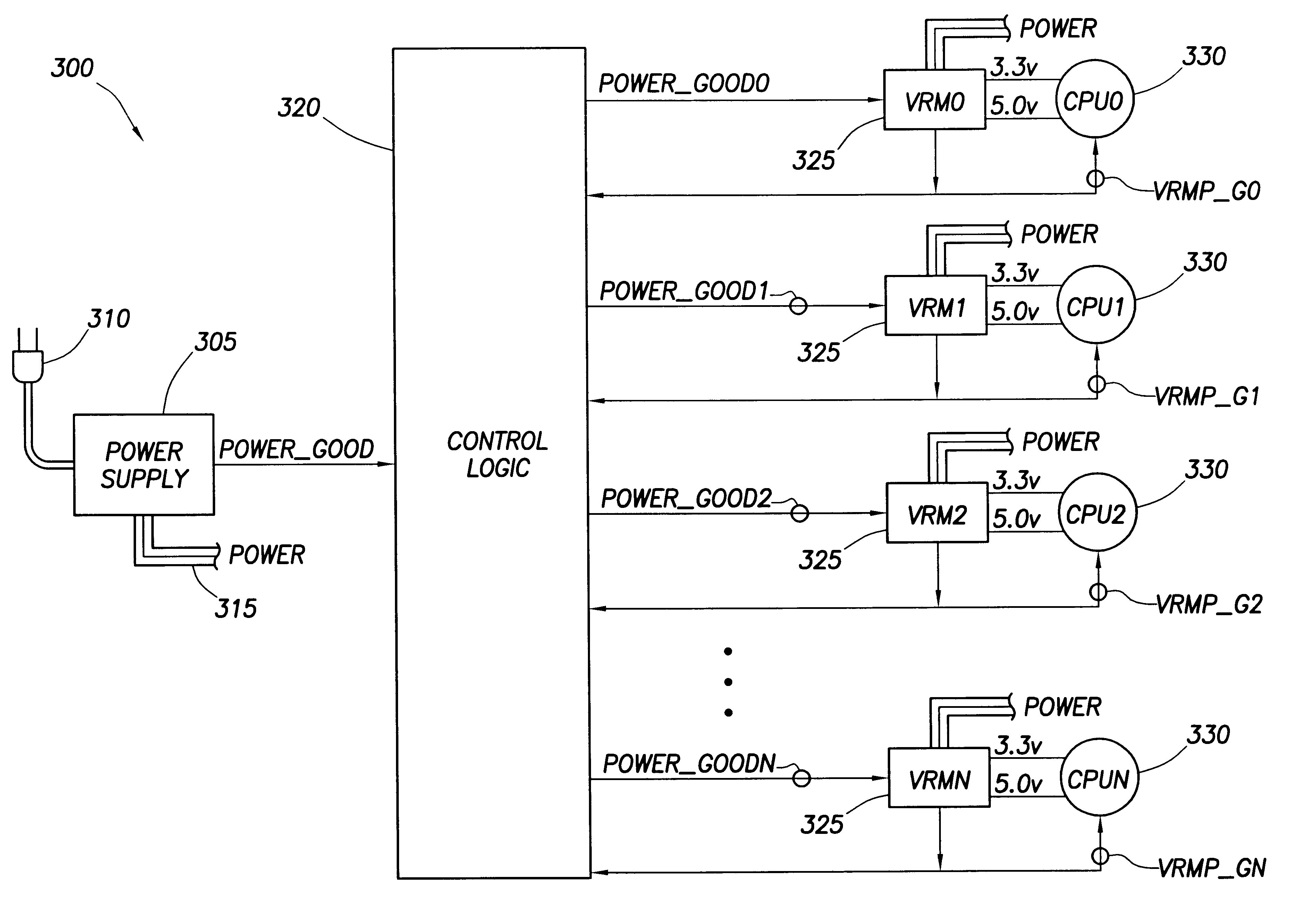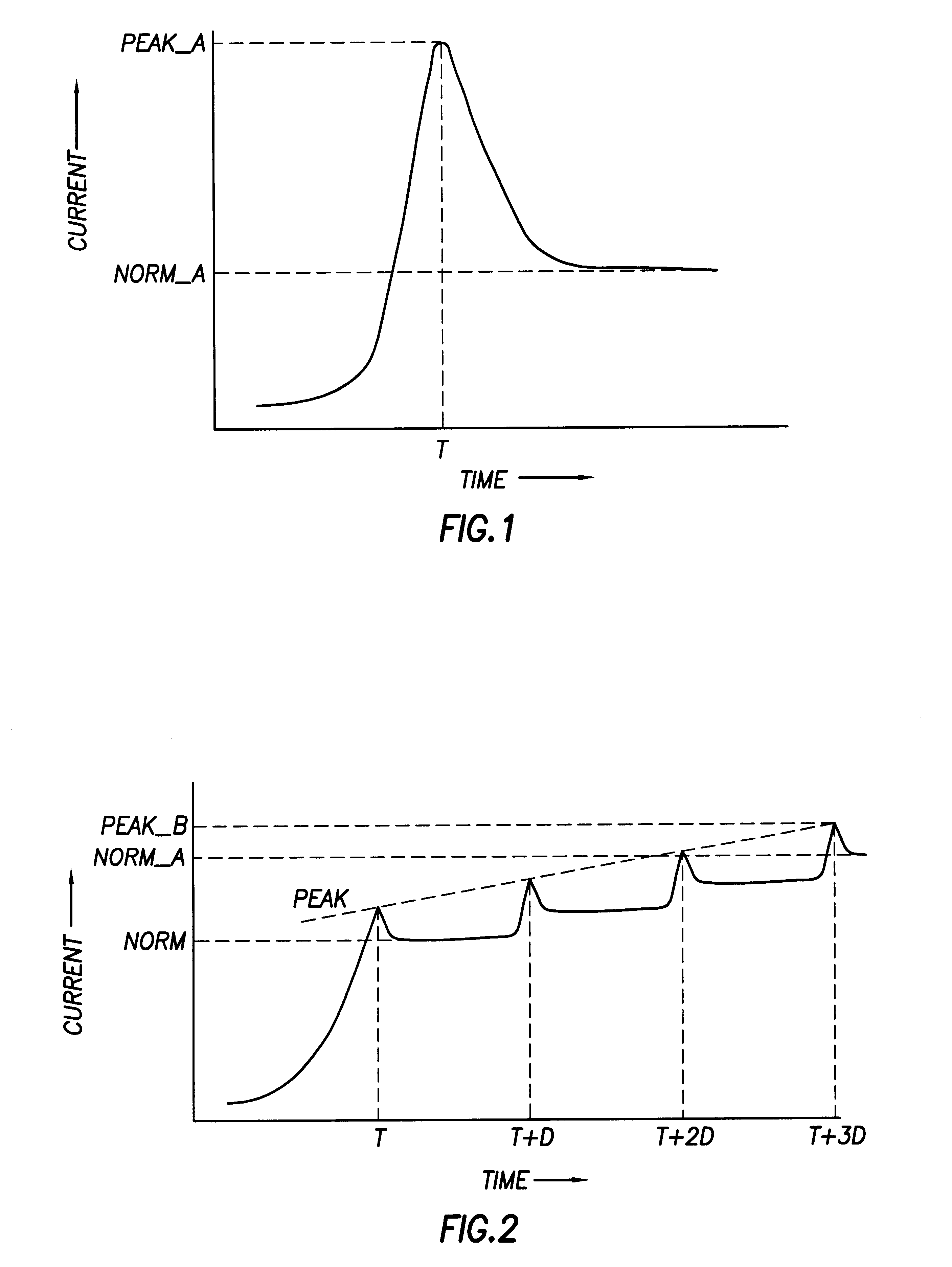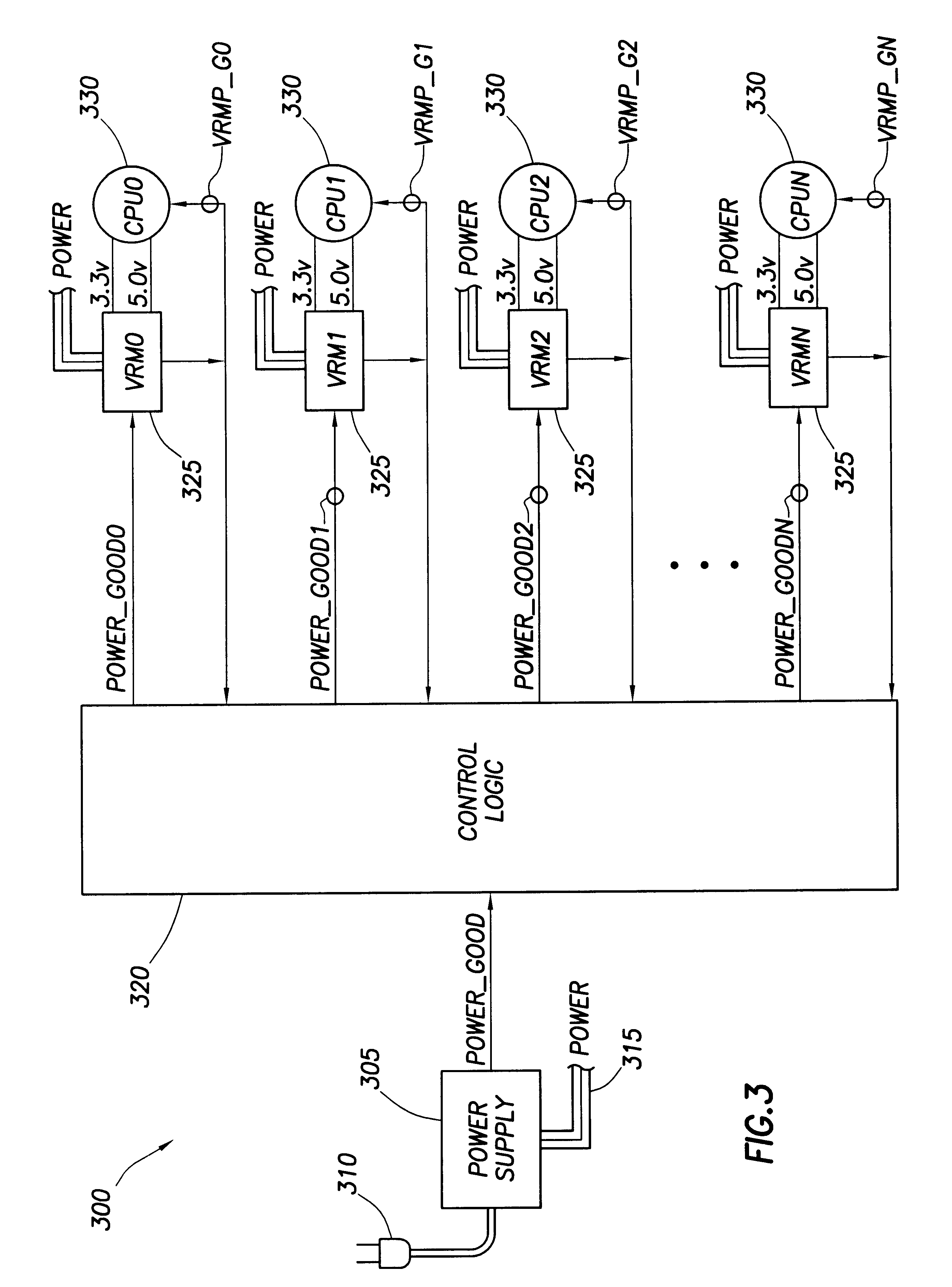CPU power sequence for large multiprocessor systems
a multi-processor and power sequence technology, applied in the field of computer systems, can solve problems such as power surges during power-on, power requirements increase, and power surges that are becoming important issues
- Summary
- Abstract
- Description
- Claims
- Application Information
AI Technical Summary
Benefits of technology
Problems solved by technology
Method used
Image
Examples
Embodiment Construction
In accordance with the exemplary embodiment of the invention, FIG. 2 shows a plot of power supply current versus time for power-on of a multiprocessing computer system incorporating sequencing the power-on for each processor to power-on the processor's one after the other so as to reduce the current surge. In FIG. 2, the Peak current surge at time T during power-on of a first processor in the multiprocessing computer system is much smaller then the surge shown in FIG. 1. After power-on of the first processor, the first processor settles to a steady state current Norm that differs in much smaller magnitude from Peak when compared to the difference between Peak_A and Norm_A of FIG. 1. As each processor in the multiprocessing computer system is powered on after a settling time D, the current surges to a Peak value before settling to a steady state value. For a multiprocessing computer system containing four processors as shown in FIG. 2, at time T+3D when the final processor is powered...
PUM
 Login to View More
Login to View More Abstract
Description
Claims
Application Information
 Login to View More
Login to View More - R&D
- Intellectual Property
- Life Sciences
- Materials
- Tech Scout
- Unparalleled Data Quality
- Higher Quality Content
- 60% Fewer Hallucinations
Browse by: Latest US Patents, China's latest patents, Technical Efficacy Thesaurus, Application Domain, Technology Topic, Popular Technical Reports.
© 2025 PatSnap. All rights reserved.Legal|Privacy policy|Modern Slavery Act Transparency Statement|Sitemap|About US| Contact US: help@patsnap.com



